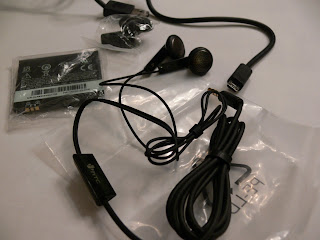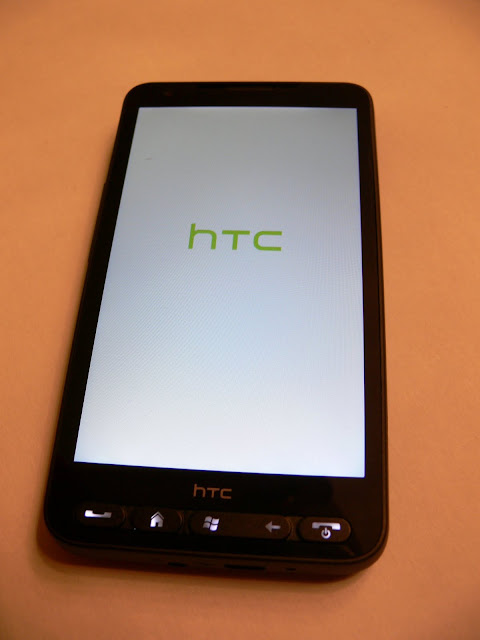IntroductionWell, my first review will focus on the newest HTC HD2 clone. This clone is based on a MediaTek chipset and features dual SIM dual standby support. This clone is also known as
HD9 because it's a new release which is an exact copy of the original HTC HD2 (in terms of size, camera location and compatibility with original accessories).
Chipset |
| Name: | MediaTek MT6516 |
| CPU: | 416 MHz ARM9™ |
| Instruction set: | ARMv5 |
Software environment |
| Embedded OS: | Windows Mobile 6.5
Android 2.2.1 (Froyo) |
Body |
Dimensions
(width x height x depth): | 120.5 x 67 x 11.3 millimetres |
| Weigth: | 150 grams |
| Color: | Black |
Memory |
| RAM:capacity: | 256 MB |
| ROM-capacity: | 512 MB |
| Expansion slot: | microSD memory card, supporting up to 16 GB |
Network support |
| Primary phone: | GSM850, GSM900, GSM1800, GSM1900 |
| Secondary phone: | GSM850, GSM900, GSM1800, GSM1900 |
| Data links: | GPRS, EDGE |
Display |
| Type: | LCD capacitive touchscreen |
| Size: | 4.3 inches, WVGA resolution (480 x 800 pixels) |
Camera |
| Main (rear): | 8 megapixels (interpolated) with autofocus and dual LED flash |
| Secondary (front): | 0.3 megapixels |
Interfaces |
| Bluetooth (802.15): | Bluetooth 2.0 + Enhanced Data Rate |
| Wireless LAN / Wi-Fi (802.11): | IEEE 802.11b, IEEE 802.11g |
| USB: | USB 2.0 Client, Hi-Speed (480 Mbit/s)
USB Series Micro-B (Micro-USB) connector |
Satellite navigation |
| Built-in GPS module: | MT6620 chipset |
| GPS antenna: | Internal |
| Complementary GPS services: | A-GPS (Assisted GPS) |
Additional features |
| Sensors: | Gravity and Proximity sensors |
| Analog Radio: | FM radio (87.5-108 MHz) |
UnboxingWell, I was very anxious to open the case and try out the phone, but had to control myself and take some pictures first...
The charger, just like the original...
...and the rest of accessories.
Construction
As you can see, this clone looks exactly like the original HTC HD2. The quality of the materials is very good.
Only two ports dot the outside of the phone: the micro-USB connector and the 3,5 mm headphone jack. Both are located side-by-side at the bottom of the phone, leaving the rest of the perimeter unmarred.
Up and down volume buttons in the left...
The 8 megapixels camera with dual LED flash...
Looks good, doesn't it? The body is exactly like the original HD2. You can have both side-by-side and can't even tell which one is the original and the clone.
After removing the battery, you have the access to the two SIM slots. The one in the bottom is the SIM2 slot, while the upper one is the SIM1 slot. You can also see the microSD slot in the left.
The super AMOLED displayOne of the greatest features of this smartphone is it's beautiful screen. It sports a Sharp super AMOLED 4,3 inch screen. This is actually one of the best screens around, and whose colors... must be seen live.
Viewing angles of this screen are... almost unlimited!
FunctionalityFrom the moment you start working with this phone you can notice the difference speed when compared to the original HD2. This is obviously due to the used processor, but nevertheless the phone runs really smoothly.
The phone came with SPB Mobile Shell pre-installed, but personally I prefer the good old WM6.5 layout.
The dual SIM integration in Windows Mobile is great. From the dialler, you can choose from which SIM to initiate the call. In call history screen, missed / received / made calls can be checked with the indication of the SIM number.
Using the wireless manager, you can easily enable / disable Wi-Fi, Bluetooth, Phone 1 or 2. Airplane mode (also known as flight mode) disables all wireless radios. From the menu, you can set each SIM card independently. Different ringtones can be set for each card, for example.
Another great feature is the ability for the user to choose the SIM that can establish a data connection. Just as an example, you can have your private card as SIM1 and your data card as SIM2. It's just a matter of selecting to connect through SIM2. Another example could be if you can receive multimedia messages (MMS) in both cards, then you would have to set here the card that should be able to connect to the MMS server and download the message.
The next feature is something that's only available on MTK based smartphones and can be quite useful. Under system settings, you can find a tool that can schedule power on / off. Well, I'm just evidencing this feature because you can only find in very few smartphones.
A fantastic feature that I noticed while doing some test calls was the ability to turn off the display when your head is next to the earpiece, by making use of the proximity sensor. That can obviously save your battery life as well as prevent you from "touching" something that you don't want to.
In terms of battery performance, it's considerably good taking into consideration that the phone has a very big screen and dual SIM with dual standy support. With a not so intense phone usage, about 2 hours of calls in total, BT always on and sometimes connected to my car kit, some short messages, GPRS connection every 30 minutes to check for e-mails and sync contacts / calendar with Google, the battery lasts two days.
I got quite amazed by the camera application, as the user can tweak a lot of settings.
For a smartphone, it takes acceptable photos. Although lacking in edge detail like most cell-cam photos, images are bright, pop-out colorful, and as long as you keep the phone stock-still, the flash brilliantly illuminates indoor scenes. However, with a touchscreen shutter release, it’s very difficult to keep the phone as still as necessary to get an unblurred shot in anything but bright sunlight.
HD9 sample photos
Supported operating systemsBy the time I got this phone, the only OS supported was Windows Mobile 6.5. As several other clones based on the MT6516 chipset, this one can also be flashed with the newest operating system from Google - the Android. It's said that this year will be the year of Android and this clone couldn't be out of the run.
Please keep in touch and don't miss my next review. I will show you how this smartphone behaves with Android 2.2 (Froyo). Just a few candy for you:
Final thoughts
This is indeed a great phone. If you are looking for a new dual SIM smartphone (to replace your old ACER DX900 like I did), then this is definitely
"the" smart choice
.Highs:
- Dual SIM Dual Standby
- Multi-touch AMOLED screen
- Good battery life for a dual SIM smartphone
Lows:
- Doesn't support 3G networks
- Could be too big for some people (personally I like this one because of the big screen)































































